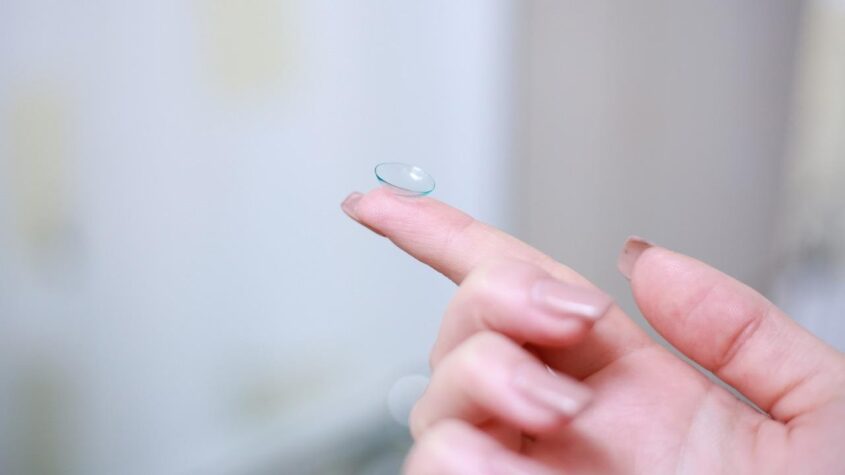How To Choose The Best Seller Contact Lenses

Contact lenses are not only great alternatives to glasses but can also be viewed as a fashion accessory. If you have vision problems and your eye doctor has prescribed corrective aids, contact lenses are a great solution for restoring normal vision. They address various vision problems such as near-sightedness, far-sightedness, astigmatism and other conditions.
You might be feeling confused about the multitudes of lenses available to you across various sellers and are probably feeling lost in deciding which type of lenses are best suited to the shape of your eye. An eye doctor should guide you with this important decision of yours. However, it is always good to research the various options that are out there.
Before an eye doctor can prescribe contact lenses, they will ask you some general questions to determine the best fit. There are soft contact lenses, rigid gas-permeable lenses, bifocal contacts, monovision lenses and many more. Among these, there are contact lenses for daily use, extended wear, and disposable kinds. We go over each of these lenses’ advantages and disadvantages to help you make an informed decision.
Different Kinds of Contact Lenses
Soft Contact Lenses
These are the most common contact lenses and are available in different varieties. There are disposables, silicone-based and even coloured. Soft contact lenses allow oxygen to pass through to the cornea making them more comfortable and healthy. Oxygen deprivation to the cornea may cause serious problems to the eye.
Types of Soft Contact Lenses: The daily disposable kind lets you discard them after a day of use. With these, you would not have to worry about cleaning regularly or suffer from dry eyes. Those with allergies will find these suitable.
The silicone-based contact lenses are highly breathable and allow vast amounts of oxygen to pass through to the cornea. They also help prevent foreign particles from accumulating on the lens. You can generally wear these lenses for longer periods of time.
Then there are the coloured contact lenses with varying degrees of tint. There are generally three types of tints you can buy — visibility tint, enhancement tent and colour tint. Visibility tint has a tinge of colour added to them. Enhancement tint, as the name suggests, brighten/darken your natural eye colour. Colour tint changes the visible appearance of your eyes.
Advantages of Soft Contact Lenses: Most soft lenses are disposable and, therefore, convenient when you want to get a new pair. Regularly replacing the lens means more eye comfort and less chance of infection. Within the disposable kind, there are daily, weekly and monthly. Compared to the rigid gas-permeable type, soft lenses are more comfortable for the wearer.
Disadvantages Of Soft Contact Lenses: They tend to absorb particles such as bacteria, chemicals, smoke, sprays, mold and others more easily than other contact lenses. As a result, these foreign particles can irritate the eye. Soft lenses are more fragile and can easily tear in comparison to the others.
Rigid Gas-Permeable Contact Lenses
These types of lenses are more rigid than soft lenses. Since they are made from silicone, they allow oxygen to pass through to the cornea.
Advantages: They are relatively more durable and easy to take care of. These lenses help with correcting astigmatism, and individuals might have better vision with these than soft lenses.
Disadvantages: These contact lenses may not feel comfortable initially. However, with daily wear, people can get used to them.
Bifocal Contact Lenses
These contact lenses are ideal for people with presbyopia. This condition usually affects people as they age, and the lens in their eyes loses the ability to focus from near to far. Patients suffering from both near and farsightedness can make use of bifocal contact lenses. These lenses have both near and farsightedness correction in one lens. Your ophthalmologist will diagnose your condition and prescribe a bifocal that suits your particular needs.
Multifocal Contact Lenses
These kinds of contact lenses are prescribed to people with farsightedness or those with difficulty focusing on distant objects. Generally, eye doctors prescribe bifocals for people with farsightedness. However, multifocal can work well for people with this condition as well. Each of these lenses comes with advantages and disadvantages, and the con of this particular variety is that the individual may have issues with blurriness or trouble focusing.
Monovision Contact Lenses
These contact lenses are suitable for people with near-sightedness in one eye and farsightedness in the other eye. Patients with this condition may have trouble adjusting to the contact lenses and generally have depth perception issues. As a result, tasks that require depth perception, such as driving, may pose challenges to the individual.
Contact Lenses to Correct Astigmatism
Toric contact lenses are prescribed to individuals who have astigmatism. Toric lenses are available in multiple options, such as soft lenses, rigid gas permeable, daily or extended and coloured. These kinds of contact lenses generally address two types of vision issues: astigmatism and near/far-sightedness.
Author’s Bio
Karthik Talwar is a content writer for BreezeMaxWeb that helps businesses showcase their brand through enticing copy. When he is not working, he enjoys exploring new places and trying new foods.








